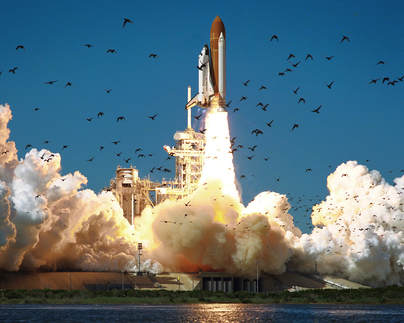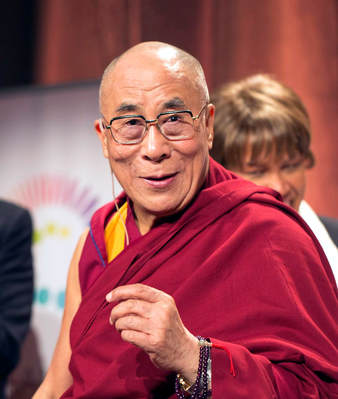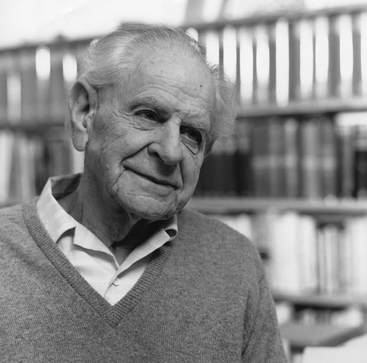|
Scientific discoveries, even important ones, are normally published in specialized journals, and then it’s mostly up to the public relations people, journalists, bloggers, and other pundits to step in, simplify the story, and distill the meaning and importance of the findings through printed, electronic, or televised media letting the public know how “exciting” these findings are. When these discoveries are presented to regular folk, there are no strobe lights, stage fog, explosions, or musical backgrounds. Most of the time there is no show, no drama, no razzle-dazzle. In an age when the attention of the public is only captured by some of the most eye catching, awe inspiring, or just plain outrageous antics and theatrical gimmicks, for the average person science comes across as a pretty boring enterprise. That is not to say that established science can’t be presented in an interesting and exciting way that captures our attention. What I am talking about is science as it happens. Those WOW! moments, those instants in science where something new is discovered or thought about on the spot. Some past WOW! moments that come to mind are the discovery of the correct pairing between the bases of DNA by James Watson, the discovery by Alexander Fleming of the substance secreted by a mold that killed bacteria in a culture (penicillin), the discovery of X-rays by Wilhelm Conrad Rontgen, the discovery of right and left handed crystals of tartrate by Louis Pasteur that gave rise to the discipline of stereochemistry, and the discovery of the periodicity of the elements by Dmitri Mendeleev (periodic table). However, WOW! moments in science are often private affairs (things that happen in the solitude of a lab or an office), and the raw science involved would not be readily understood by any non-scientist bystanders at the time. Unfortunately, the closest we can get to viewing such moments are documentaries or movies where the original scientists, or actors playing those scientists, recount or reproduce the science for a film crew. This often takes place years after the fact. But there is one particular WOW! moment that comes to my mind that was televised live, although to be fair it was a reenactment of something the scientist had discovered a few hours before on his own.  In 1986 the space shuttle Challenger blew up after takeoff, killing 5 NASA astronauts and 2 payload specialists, one of whom was to be the first “teacher in space”, Christa McAuliffe. A presidential commission (the Rogers Commission) was formed to investigate what led to the Challenger disaster, and this commission included the Nobel Prize winning physicist Richard Feynman. Feynman, who had one of the keenest minds of the 20th century and who had tackled some of the great problems in physics, also was a down to earth regular kind of guy who could talk to regular people and understand their problems. His “no bullshit” attitude soon made him a pain for the committee directors. While the members of the committee were in Washington listening to presentations by NASA executives, Feynman was down in Cape Canaveral mixing with the regular engineers and technicians. He soon found out that there was a disconnect between management and their underlings. As it turns out, many of the shuttle launches which were presented by NASA executives as “safe” had really been precarious, with several things going wrong that could have doomed the missions. Up to the launch of Challenger, NASA had just been lucky. One particular area of concern were some rubber seals called O-rings which were intended to plug the joints between the segments of the shuttle’s solid rocket boosters. If these seals failed, the gases inside the booster could leak out disrupting the structure. For their correct functioning, the O-rings had to be resilient. Feynman’s approachability and capacity and desire to understand the truth allowed individuals within the hierarchy of NASA and their contractors to anonymously relay information to him that there had been issues with the O-rings in several flights, and that the possible lack of resiliency of these seals at low temperatures was a particular concern. This was significant as the day Challenger was launched had been one of the coldest among all the shuttle launches. Feynman proceeded in true scientific fashion to perform an experiment. He obtained a clamp at a hardware store, twisted a piece of an O-ring sample, and dunked it in an ice water glass to simulate the temperature of the morning of the Challenger launch. After a few minutes when he removed it and released the hold of the clamp, the O-ring failed to return to its previous shape for several seconds. This indicated that at cold temperatures the O-ring became stiff: it lost its resiliency.
Several hours later at a conference with all the cameras aimed at him (you can see Feynman talking at 1 min and 57 seconds in the video) he reproduced his experiment demonstrating that the O-ring loses its resiliency at cold temperatures and ended his demonstration with the understatement “I believe that has some significance for our problem.” Here is the WOW! moment that reveals the essence of science for all to see. And no lab filled with an army of technicians and postdoctoral and graduate students, or multimillion dollar grants, or fancy and expensive high tech equipment was required: just a man, a clamp, and a glass of ice water. That is all it took to solve the problem of why the Challenger shuttle exploded and expose the folly of an organization that had pushed forward ignoring critical safety problems that led to the death of 7 humans beings. All of this is even more remarkable if you consider that Dr. Feynman was battling cancer at the time he performed his work for the Rogers Commission. He died on February 15, 1988. His account of the investigation of the Challenger disaster and other stories are presented in his book "What Do You Care What Other People Think?": Further Adventures of a Curious Character. The image of the Challenger shuttle taking off by NASA is in the public domain.
0 Comments
 I once attended a presentation given by the Dalai Lama to an audience of scientists. In this presentation he relayed an anecdote of something that happened during the years when he trained to be a monk. He said that one of his teachers had stated that the moon shone with its own light. Sometime later, the Dalai Lama learned about the knowledge that the moon does not emit a light of its own, but rather that it reflects light from the sun. So he had to go back and correct his teacher. The Dalai Lama used this as a stepping stone to go on to suggest that our beliefs must be tempered by science. In other words, if we believe something and science produces solid evidence against it, then we must stop believing in it. To many people this would sound presumptuous. Why should science be the ultimate arbiter of truth? Isn’t science sometimes wrong? The answer is, of course, that science can be wrong, but as it turns out that is its strength. The reason that science is the best method we have to discover the truth about the behavior of matter and energy in the world that surrounds us is that, unlike other modalities of learning the truth, science can be wrong. Let me explain.  The above notion was put forward by the great philosopher of science Karl Popper. Popper was striving to find a way to tell science apart from other non-scientific disciplines, and he came up with a brilliant solution which he called the “criteria for demarcation”. Science makes testable claims. And because the claims of science can be tested, they can be proven to be wrong! This is also called the “falsifiability criterion”. While non-scientific disciplines produce theories that cannot be proven wrong and thus can never be tested or challenged, truly scientific disciplines propose theories that can be tested and unambiguously proven to be wrong if in fact they are. As an example, consider the case of polywater. This was a form of water that scientists were able to create inside small capillary tubes. This form of water had very different properties from regular water, and the international scientific community got really excited about its potential physical significance and applications. This went on until someone demonstrated that polywater was an unusual form of water because it was contaminated: it was dirty water! Thus the theory that polywater was a unique form of water was abandoned because it was challenged and proven false. Many scientific theories have met this fate, but this happened because they were testable. They could be proven to be false. In contrast consider Creationism. This discipline has been challenged and proven false many times. Its proponents, rather than concluding that creationism is false, have proceeded to change the theory and reformulate it is a new guise over and over. Creationism cannot be proven wrong because its proponents are not willing to stake the viability of the theory on specific testable claims. Therefore creationism is not a scientific discipline. On the other hand consider the theory of evolution. This theory has been put to test many times from many different directions, and it has survived those challenges. Today evolution has become a pillar of the biological sciences, and scientist have moved on from discussing whether evolution is true or not to applying the tenets of evolution to many areas of science that are producing discoveries that are making our lives better. The above also highlights another quality of science: it is self-correcting. In the short run scientists may make mistakes and propose incorrect hypotheses, but these hypotheses will be challenged and, if they are false, they will be proven to be so. Finally, I want to point out a real life practical application of the above knowledge that you can take away from having read this article. If you are ever witnessing a discussion where the arguments and counter arguments seem to go on forever and it is not clear who is right, just ask the following question: what evidence will convince you that you are wrong? If the parties involved in the discussion cannot unambiguously answer this question and commit themselves to changing their opinion based on whether such evidence is produced, then what you are witnessing is not a scientific discussion. This is not to say it is not an important discussion, but it does mean it will never be resolved based on evidence and facts. The photograph of the Dalai Lama was taken by Christopher and is used under a Creative Commons license. The photograph of Karl Popper by Lucinda Douglas-Menzies is in the public domain. |
Details
Categories
All
Archives
June 2024
|
 RSS Feed
RSS Feed